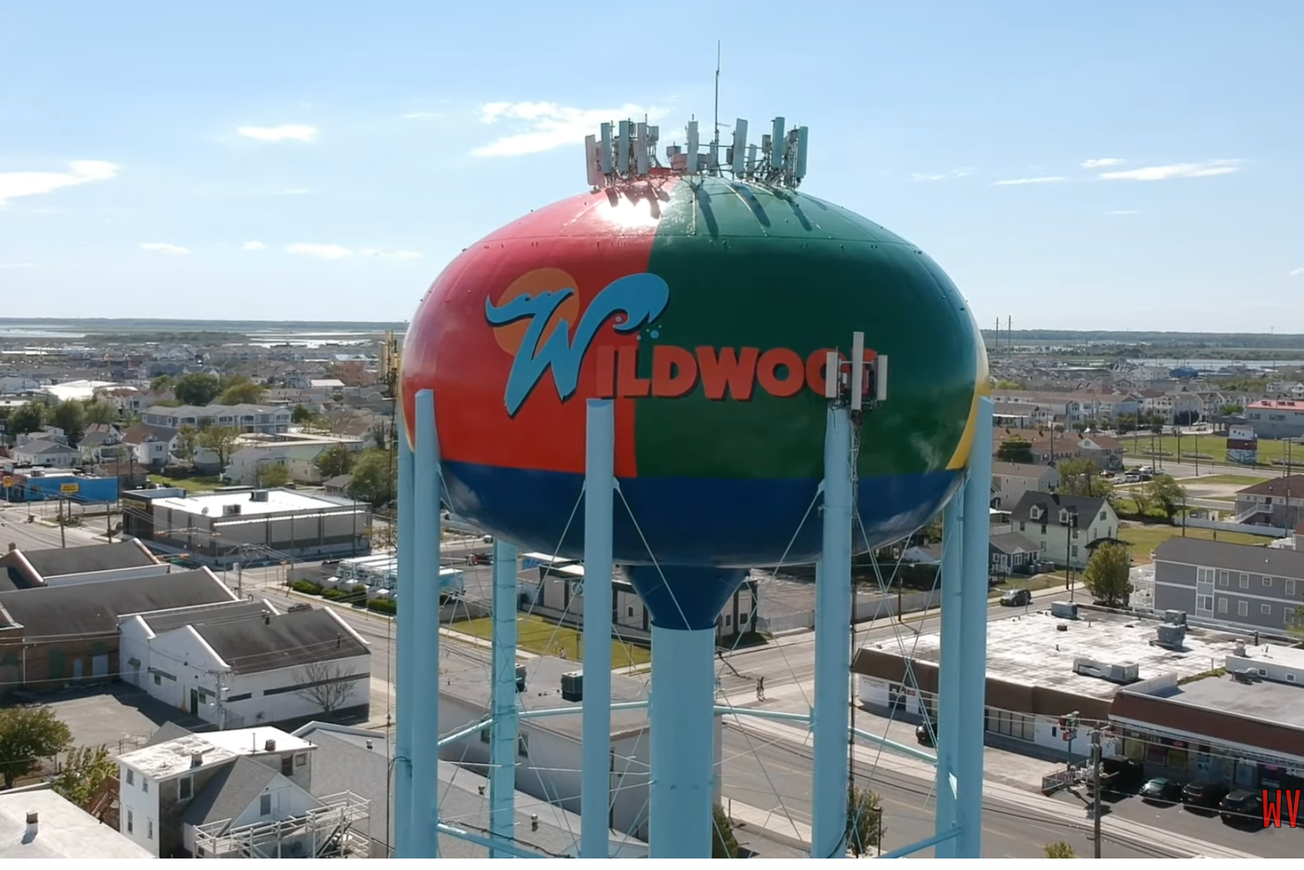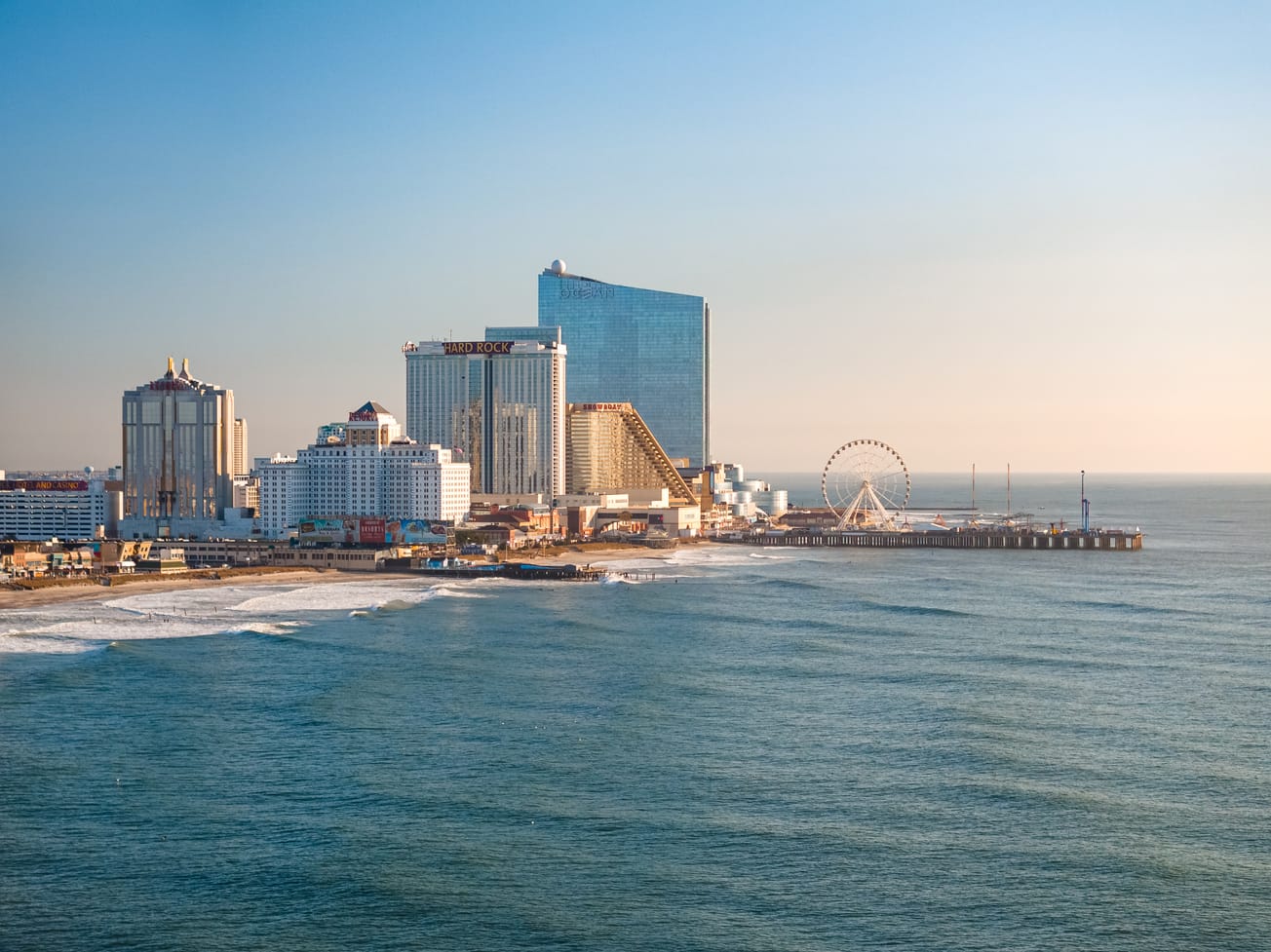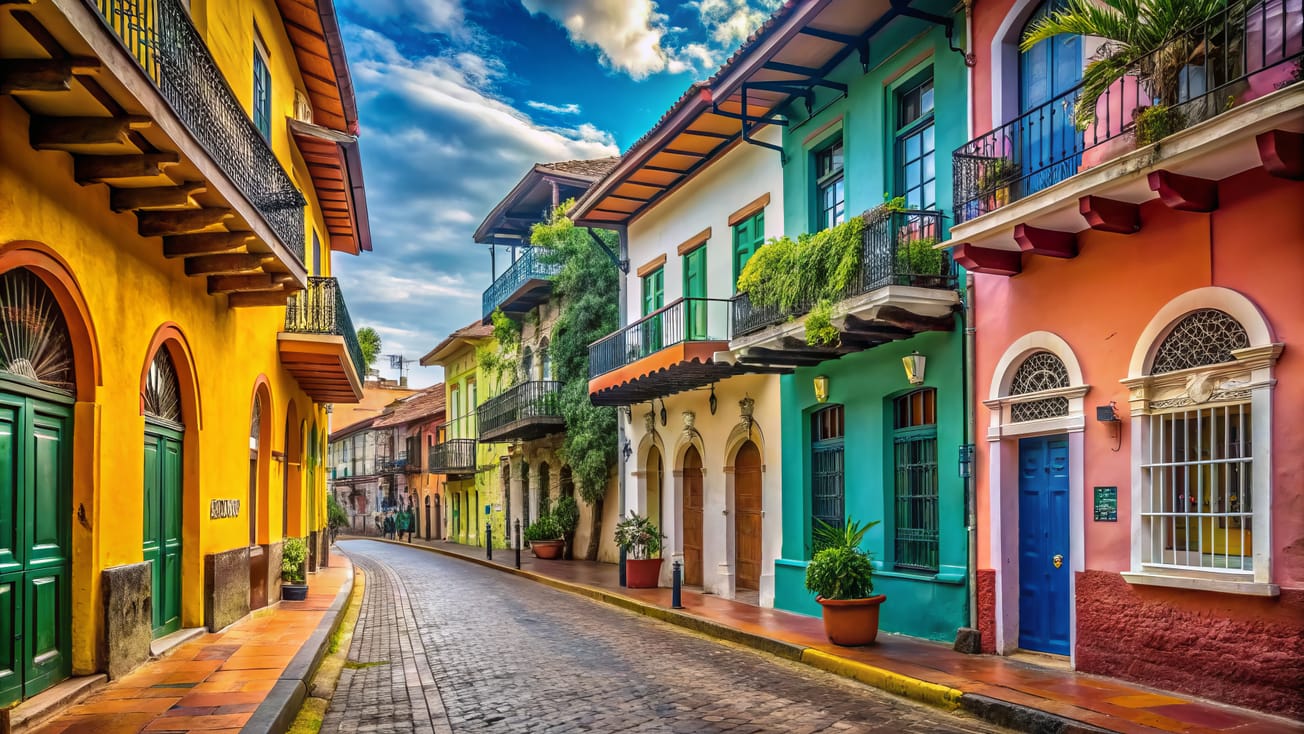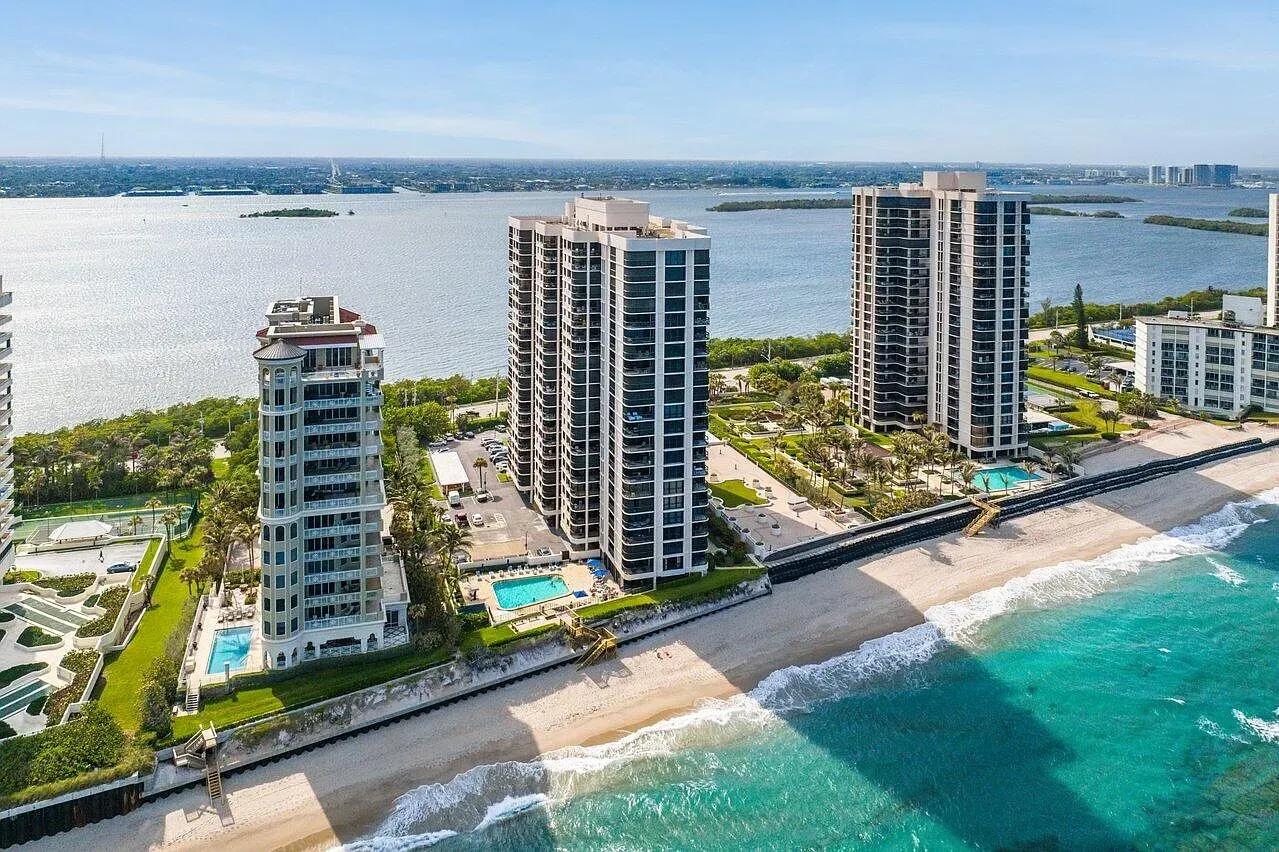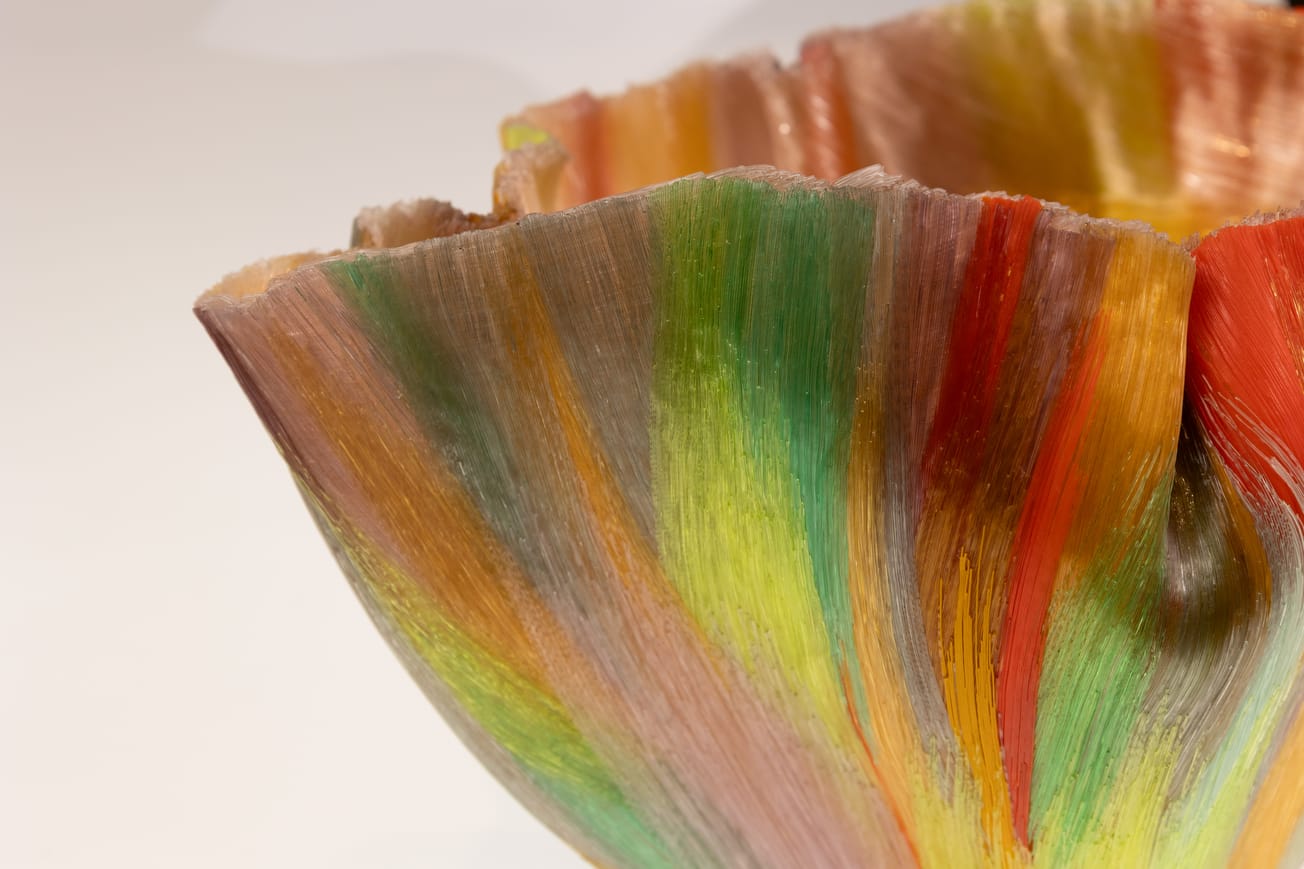When it comes to Jersey Shore landmarks, some people will drive miles to tour a storied lighthouse. But for me, as a child growing up in Ventnor, and now as an adult, returning after living away for many years, I am more fascinated by the grandeur of the water towers that dot the coastline. Whether you live at the Shore or vacation here, you needn’t drive too far to see one, as water towers are in just about every municipality, serving a purpose that’s vital to our lives, storing and pressurizing millions of gallons of drinking water. They are more of a welcome sign, signaling you’ve arrived either home or to your vacation destination, so relax and enjoy!
Hovering high, most standing well over 100 feet, they are unintentional pop art in various shapes, colors and personalities. They are both witnesses to and a part of their city's history. Now, just as much as in my early years, water towers have the power to stop me in my tracks to admire their majestic stature and clever branding. As they oversee your favorite town, their massive tanks are an open canvas, boldly using catchy slogans for self-promotion. Avalon’s tower proclaims that the town is “Cooler by the Mile.” A water tower in Atlantic City invites you to “Do AC”.
The other Lucy the Elephant
Many mirror their town’s signature symbol. Margate’s water tower is adorned with the image of Lucy the Elephant, promoting the gigantic, 6 story high beloved pachyderm, Margate’s original tourist attraction, that recently underwent a $2 million renovation. The refurbished Lucy was unveiled last summer. While the tower promotes Lucy--its depiction etched on the side of the tower that faces the national landmark – Lucy is the town’s original promotor, as it was built in 1881, before Margate was Margate, as a gimmick by real estate developers seeking to attract visitors and property owners to the then empty sandy lots near the Atlantic Ocean.
While several of the most familiar towers in the region were built during the 60s, the spheroid-shaped “Lucy” water tower at Benson Avenue between Winchester and Monmouth avenues, was completed in June 1985, to meet the increased water pressure needs during the summer, when the local population surges. Water towers, with their massive tanks in the sky, relieve the demands of pumping by maintaining pressure in the municipal water distribution system naturally, using the power of gravity. The newer 130-foot tower replaced an aging and overworked pumping station and an antiquated standpipe water tower with limited capacity that was demolished. The Lucy tank, which is 75 feet in diameter, and other similarly sized water towers all along the Shore, have the capacity to hold one million gallons of water. Water is pumped from groundwater wells directly into the water tower.
The source of water for most coastal communities is ground water coming from aquifers. Originally, wells were artesian, meaning that the water spilled out naturally due to the water pressure within the aquifer. Over time, starting in the late 1800s, pumping stations and water towers emerged. The first towers were cylindrical standpipe towers.
“The sphere and the teardrop style of water tower came into vogue during the 50s, but it was during the 1960s that Ventnor and Longport built their towers. Margate’s other tower on Amherst was built around that time,” says Margate Museum Curator Jeffrey McGranahan.
When it was time to finish the newer Margate tower and emblazon the famous etching of Lucy on the tank, there was controversy.
“The town had hired a painter from Las Vegas, Steve Metzger, who had painted a huge ham on the side of a water tank in Smithfield, Virginia,” McGranahan explains. “But the city couldn’t decide whether to point Lucy’s trunk up in the air, or down in her feed bucket, like the actual Lucy.”
At the time, the Atlantic City Press cited local elephant experts who contended that it is bad luck to have an elephant’s trunk pointing down. However, the concern became, if the trunk is pointing up, it would not only be a divergence from the original, but it might lead to complaints that it is a Republican elephant and not Lucy the Elephant.
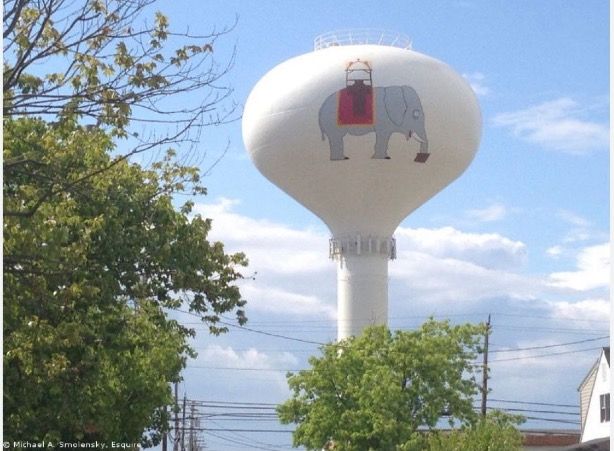
Lucy the Elephant expert Josephine Herron was able to convince the city that depicting an elephant with trunk down in her feed bucket was not bad luck, but represented “good nutrition”, according to an article in the Press.
Metzger made his living painting animals, city seals and other objects on water towers. To accomplish the 34’ by 36’ painting of Lucy, he had to hang 100 feet above the ground. “You’ve got to forget where you’re at,” Metzger told the Press. “If it isn’t a little bit of a challenge, it really would get kind of boring."
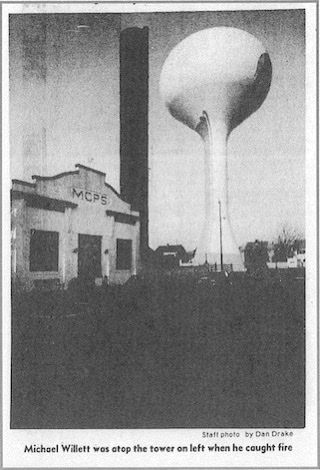
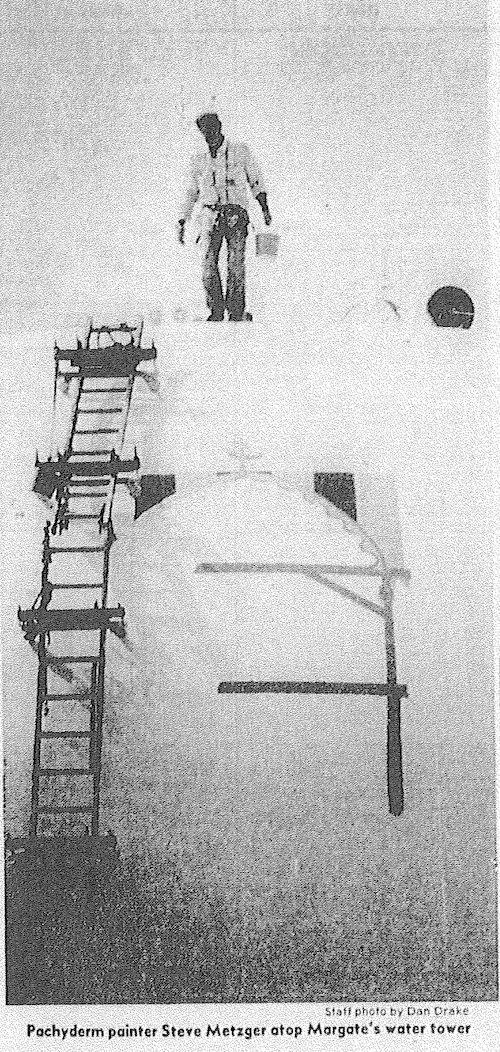
(left)The "Lucy" tower replaced an old standpipe tower, which was removed after the new tower was completed in 1985. The standpipe tower caught fire when it was being dismantled, injuring a worker. (Right) Water tower design painter Steve Metzger. Source: Atlantic City Press
The Best Port
Driving through the streets of Longport, just south of the Lucy tower, you would be hard pressed to not notice the massive smile etched on the giant orb that hovers like a bubble floating over the beautiful homes, beaches and bay. After all, there’s much to smile about. On the other side of the tower, a cheery slogan proclaims, “The Best Port Longport.” Whenever I’m heading toward the Longport bridge, that smile holds my gaze for a moment, as a passerby crossing your path might, and I can’t help but – well– smile back. It’s almost reflexive.
The Longport Water Tower soars 125 feet high and stands as a prominent landmark at the intersection of 31st and Devon Avenues. It was built during the 60s, but the iconic smile face and slogan were painted on the tower in 1982, inspired by a suggestion of then Mayor Howard Kupperman’s daughter. It elicited mixed reactions at first, but soon endeared itself to the community, to the point where residents were beside themselves when the smile disappeared for nearly two years.
“Water towers have to be maintained and be painted every nine years,” says Longport Mayor Nick Russo. “We just had it repainted this past year, but prior to that, a decade ago, there were issues with the contractor and the smile wasn’t there for a while and people were getting really antsy. It was really upsetting to residents.”
In 2011, Longport awarded a $600,000 contract for routine maintenance and repainting, but the project was marked by repeated delays and somewhere along the line, the work stopped, due to a dispute, and Russo fielded phone call after phone call from folks who wanted the smile back. “I joked with people that they were going to be putting my face on the tower,” Russo tells me.
Eventually the work was completed by a different contractor in 2014 and the return of the smile face was met with an outpouring of excitement and relief. Its absence had left an unmistakable void in the community’s spirit, according to Longport Museum Manager Amy Strawder. With precision and patience, skilled painters traced the smile onto the tower, using giant stencils. Each eye measures. 5 feet in diameter and that smile we all love is 32 feet across.
The grinning tower, which underwent its latest renovation and repainting in 2023, has become a logo and mantra for the town and you won’t have to look far for merch, such as water bottles and magnets. The Longport Library has a 3-D printer that creates miniature towers for sale.
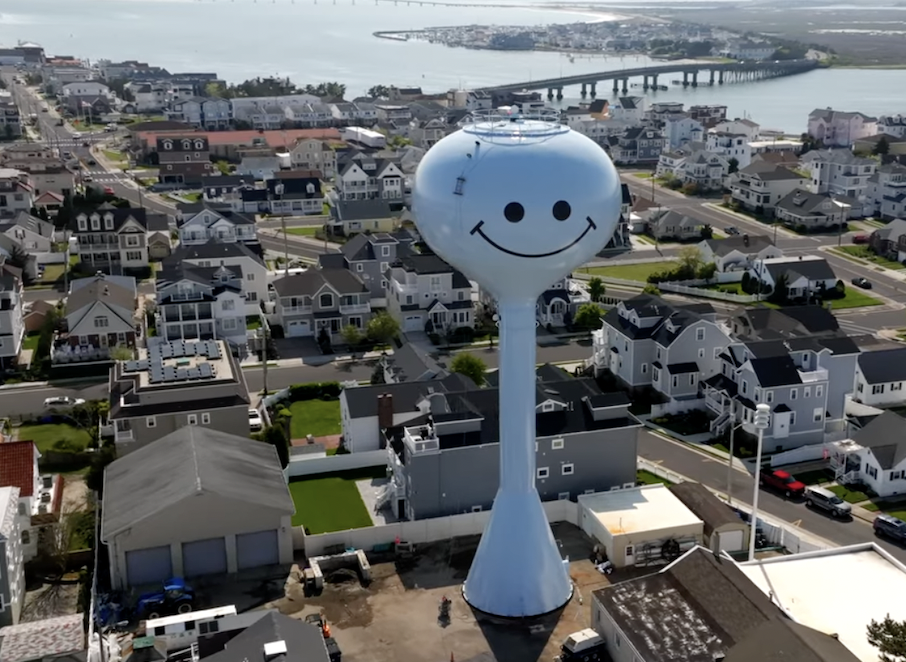
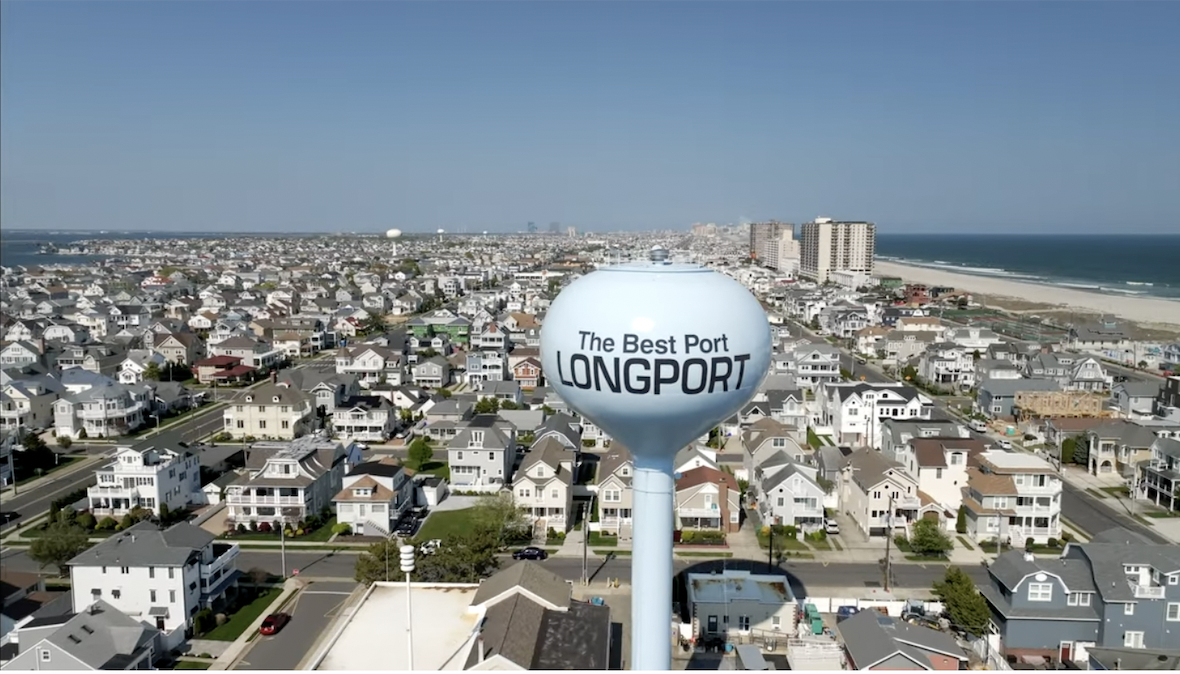
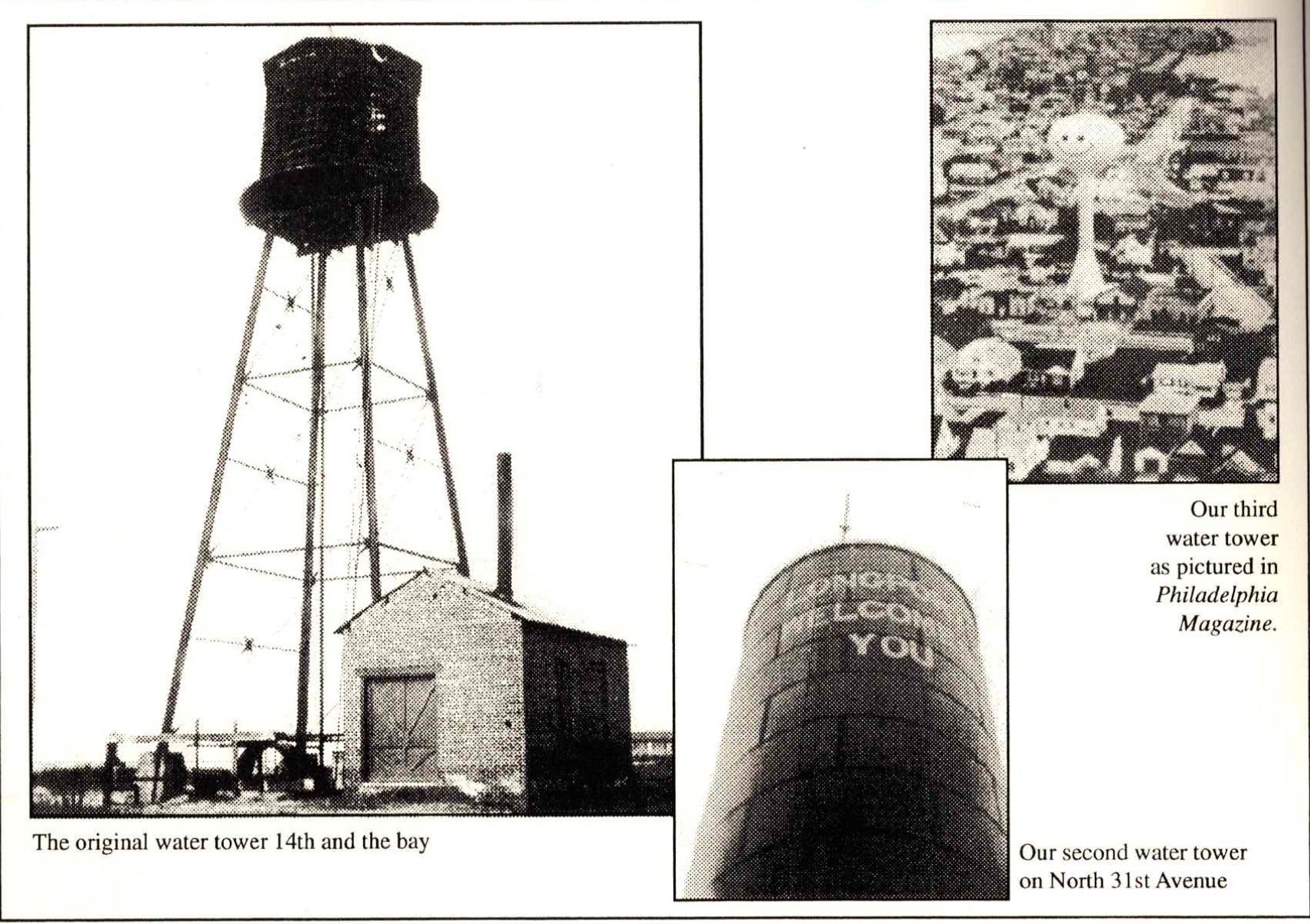
North and south views of the Longport tower. The iconic smile has become a symbol of Longport's community spirit. (Right) Longport's original water tower was built in 1895. Prior to that, cottagers pumped their own water from artesian wells with farm style hand pumps. A second standpipe tower, with the words "Longport Welcomes You" painted on it, was later constructed on North 31st street. The smile tower, with its capacity to store one million gallons of water, replaced the older towers.
Smile You’re In Sea Isle
As you drive into Sea Isle City via the John F. Kennedy Boulevard, the 135-foot water tower at 39th and Central Avenue, rises up, hovering like a spaceship out of a science fiction movie. If you aren’t doing so already, the tower reminds you “Smile, You’re In Sea Isle” alongside a smiley faced sun wearing a pair of Ray-Ban sunglasses.
The slogan was Mayor Leonard Desiderio’s idea – he had been using it in his signature line in the town’s newsletter – and he got the idea for the smiling sun from his daughter Carmella, according to Sea Isle’s Public Information Director Katherine Custer. The origin for the phrase, she tells me, was derived from an old song by the late local legend Al Alberts. The song is “On the Way to Cape May,” and the inspiring lyric, “I was taken by your smile as we drifted by Sea Isle.”
The slogan had been on the tower, but not the smiling sun, before the last upgrade in design, which came along with the tower’s refurbishment in 2018. “Since we are a resort town, we wanted to go that extra step and make it more inviting.” said Custer.
A water tower typically gets a fresh coat of paint as it undergoes it’s periodic “inside and out” maintenance. This process is in itself a spectacle. The tower must first be entirely drained, then it is encircled with metal scaffolding and shrouded in canvas and the old paint must be sandblasted until tank is a smooth pristine canvas. The base color for most towers is some shade of blue. Some say it’s to represent the resource it’s carrying inside while others say they are painted blue to match the sky. With the emergence of the new design, Custer says, people enjoy taking selfies in front of the tower and posting it to their social media accounts.
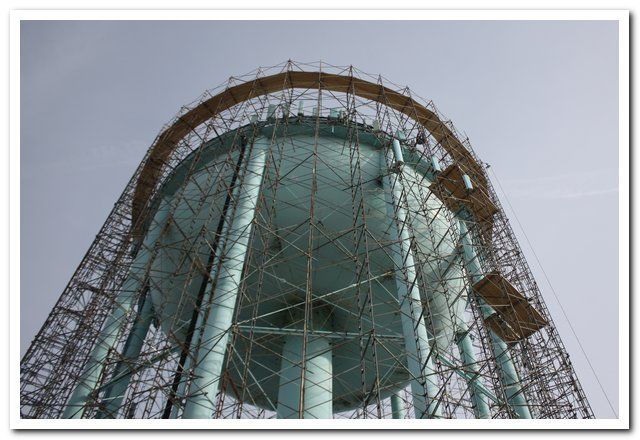
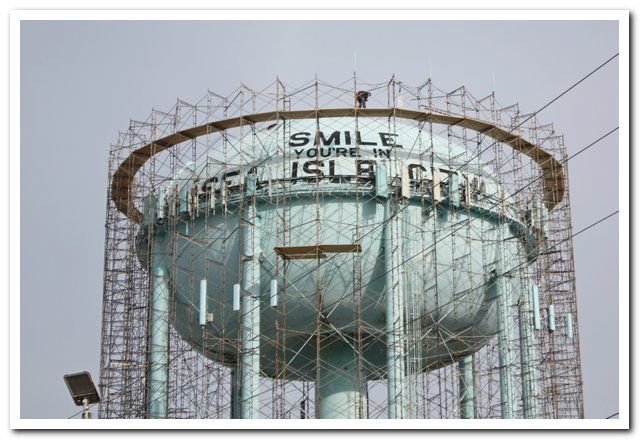
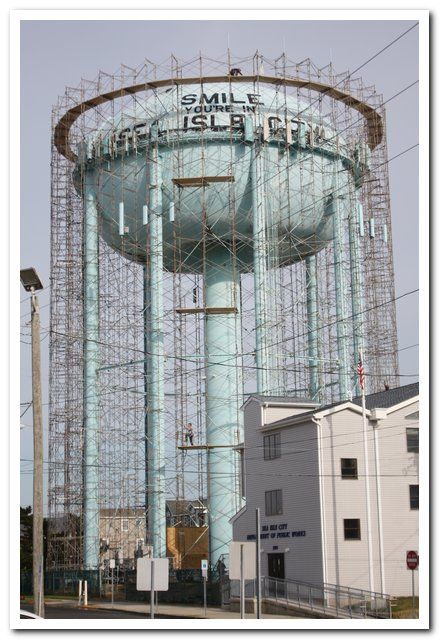
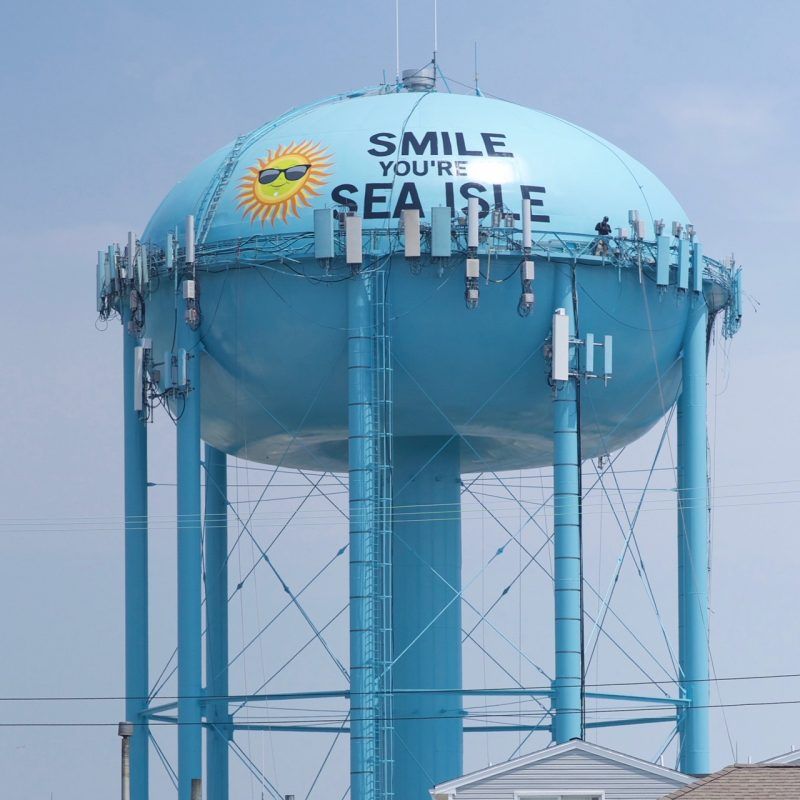
Sea Isle City's main water tower sported a new design, a smiling sun wearing shades, after its latest refurbishment in 2018. Photos courtesy of Sea Isle City
A beach ball theme in the Wildwoods
Recognizing that a colorful design can make a water tower more of a social media magnet, prone to more likes and shares, may have played into the reason why Wildwood’s main water tower went from basic blue to a colorful beach ball about 3 years ago. Whatever the reason for the upgrade, the city is sending a clear message.
While Sea Isle wants you to smile, Wildwood wants you to play. Suspended above its famous boardwalk, amusement piers and vast beaches, as if it was tossed into the sky, the beach ball follows a concept that started with the Wildwoods sign that frames the public plaza near the convention center. This is no ordinary welcome sign. The letter spelling "Wildwoods" stand 17-foot tall each and they sit behind an array of about 20 large concrete scattered beach balls that come up to your knees or higher. And beach balls appear throughout the town.
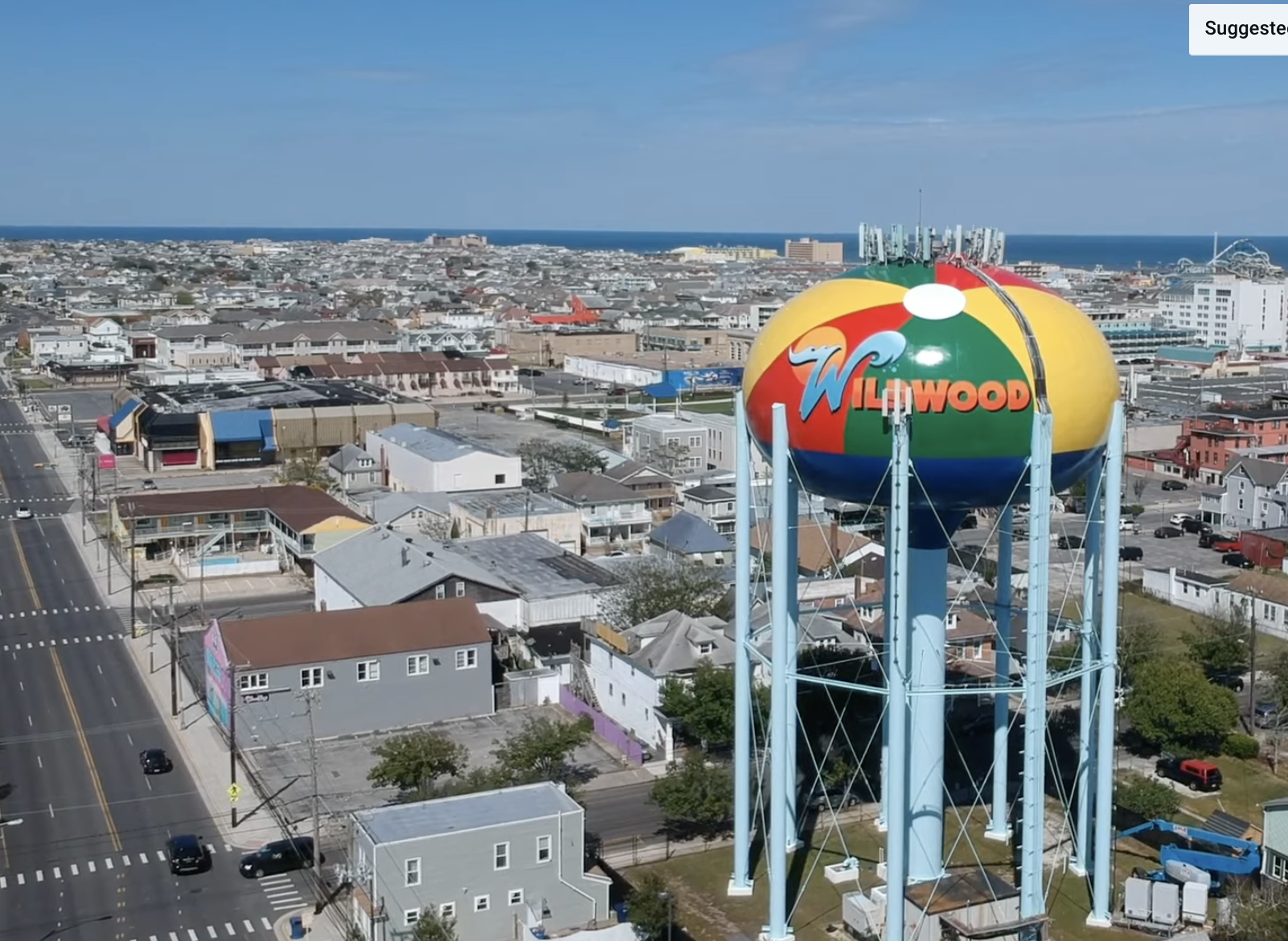
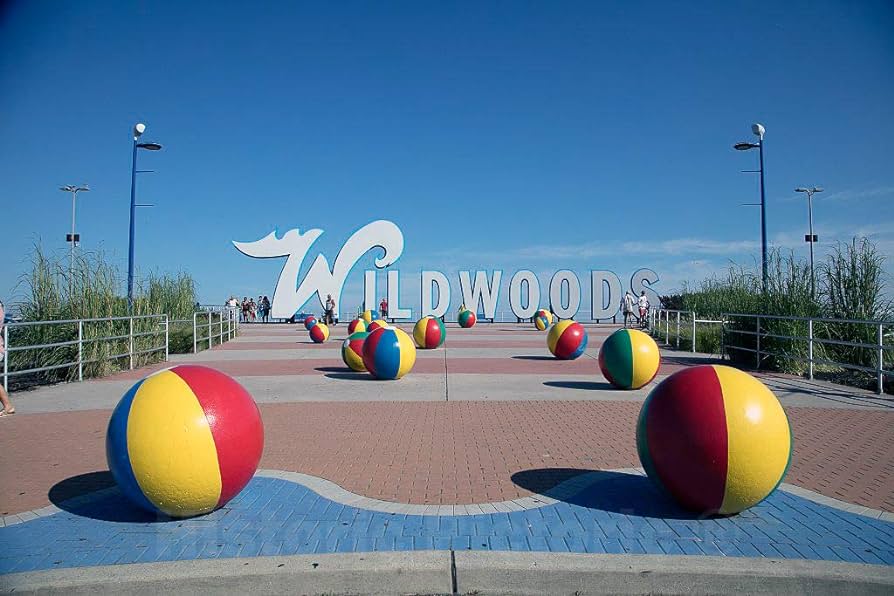
Beach balls abound throughout the Wildwoods. The Wildwoods welcome sign is a popular spot for families to take photos.
“The welcome sign has been one of the most Instagrammable places in the city, so when it was time to paint the water tower, the city said the beach ball is the way to go,” says Joey Contino, who covers the South Jersey shore for his digital news outlet, Wildwood Video Archive. Contino took drone footage of the tower when it was first completed in 2020. “The city wanted the new design to stand up and be something fun, since Wildwood is fun.”
While the main Wildwood tower on Garfield Avenue welcomes you, the older cylindrical tower on Pine Avenue has stories to tell from the days when German U-boats lurked in the waters off the coast. During World War II, the tower had to be painted black, so it would not be detected by the enemy, according to Wildwood Water Superintendent John Malinowski. At the same time, the Army Corp of Engineers built the Cape May Canal, now utilized as the ferry route, so that maritime traffic wasn’t exposed to the Germans. The Pine Avenue tower remained black all the way until 1963, when it was finally painted blue. Most recently, that tower, which can hold 750,000 gallons of water, is seeing better days. It got a fresh coat of paint and new design invoking the town’s spirit. As you may have guessed, it’s adorned with a bouncy beach ball motif.
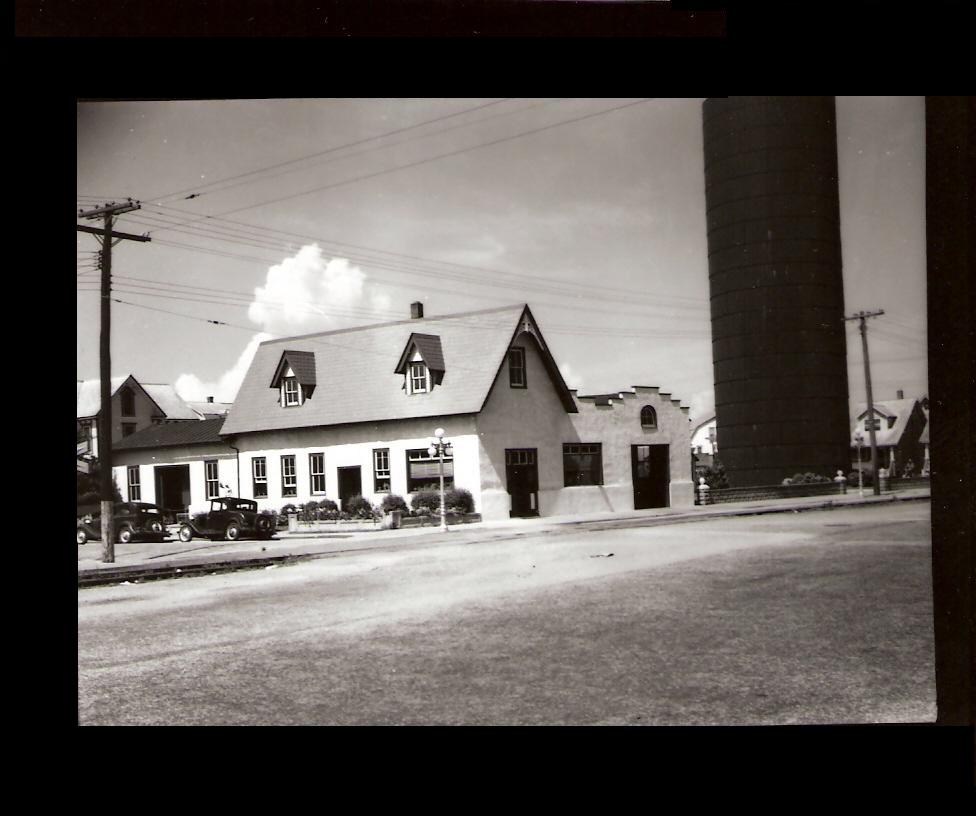
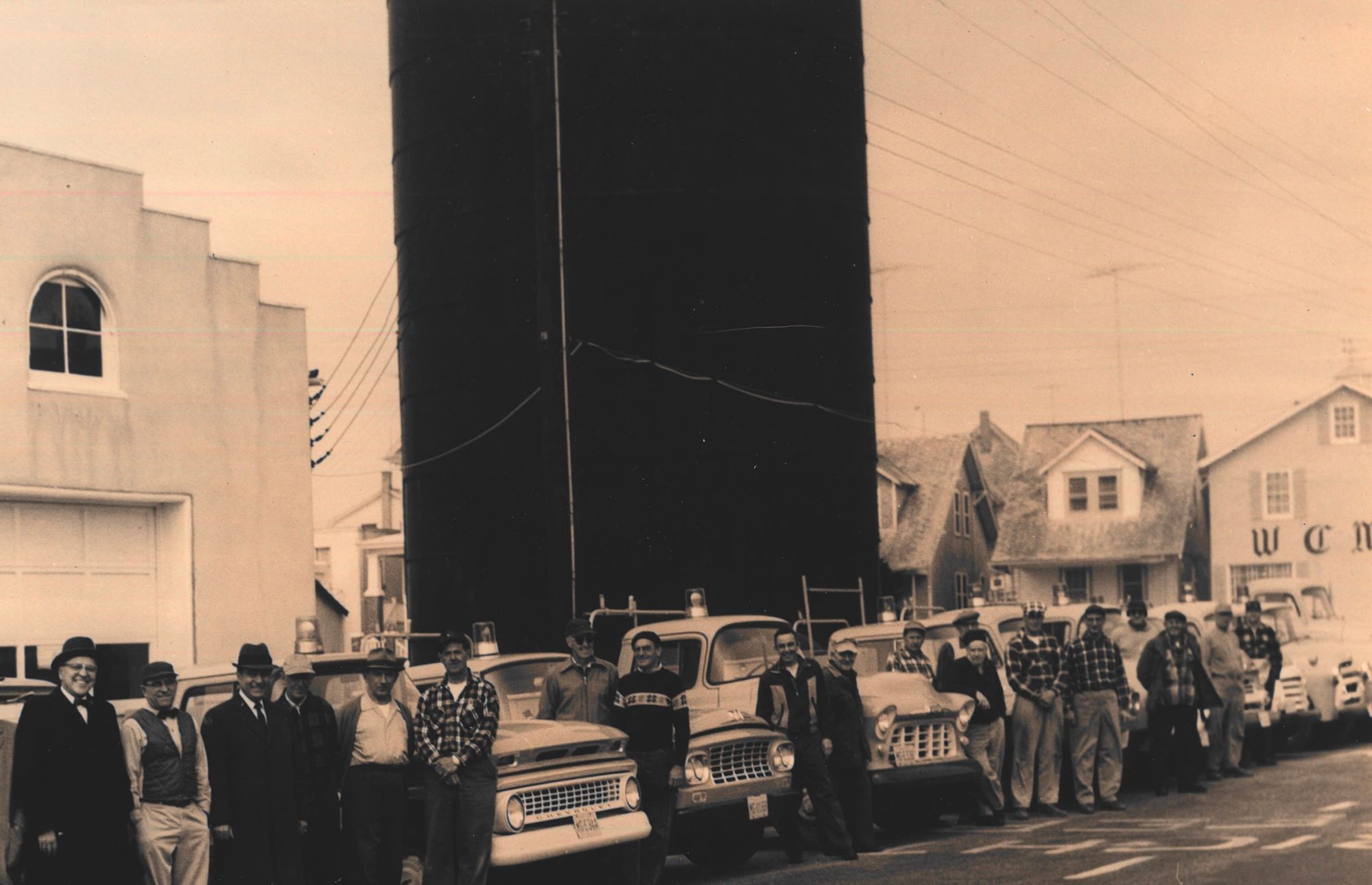
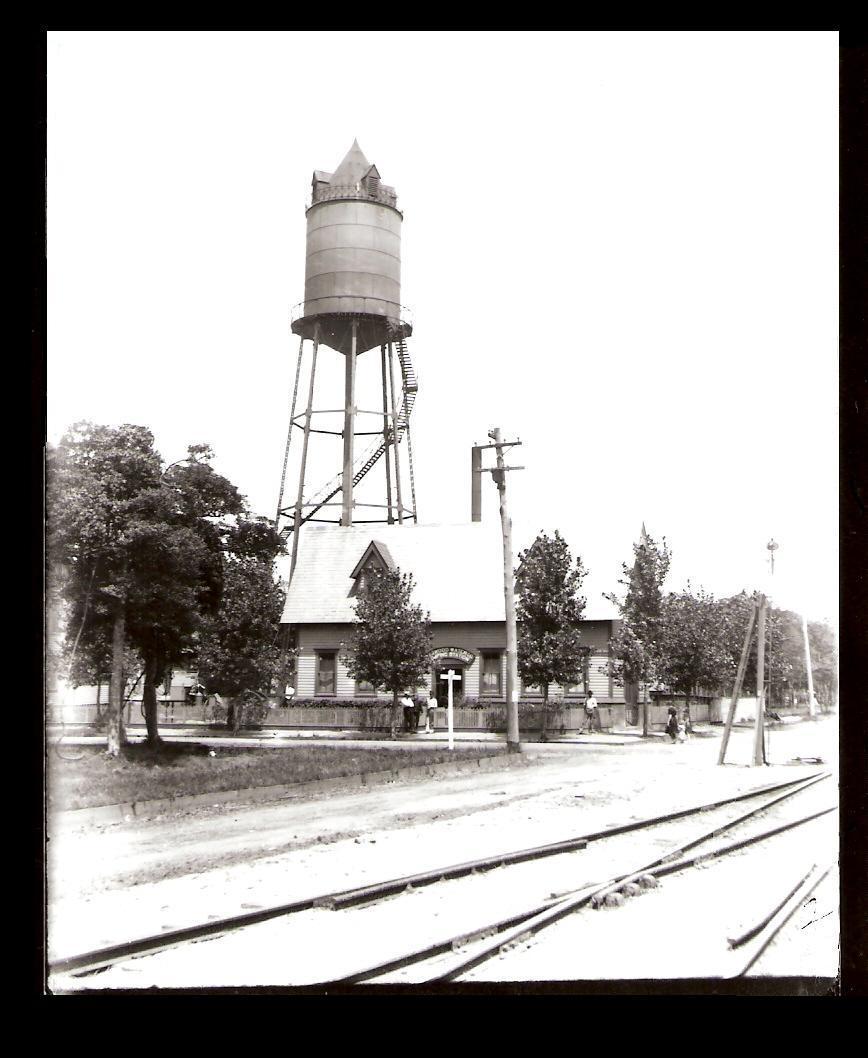
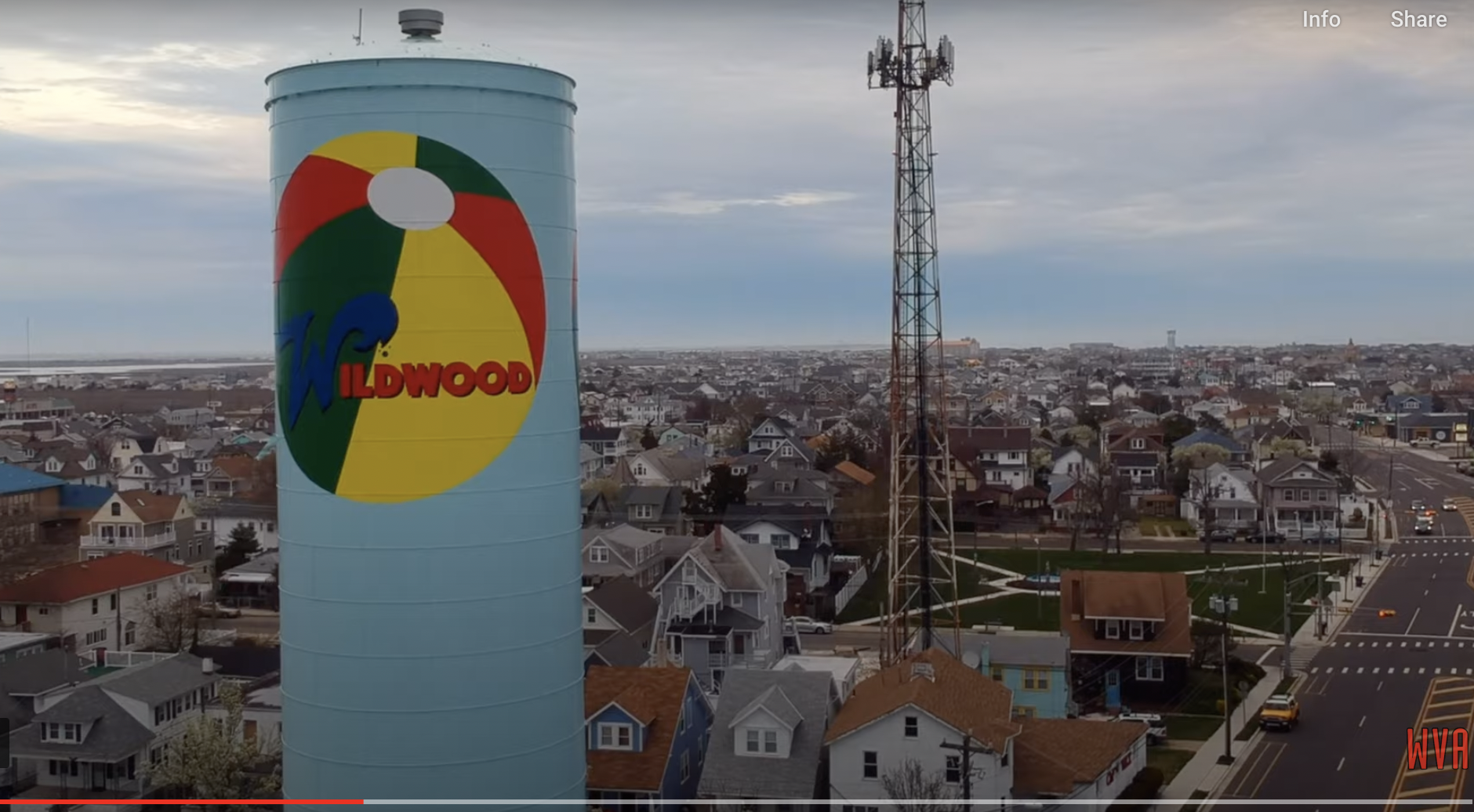
During World War II, Wildwood's tower on Pine Ave. was painted black so it would not be detected by German submarines. The top right photo was taken in the early 60s, before the tower was finally painted blue in 1963. Most recently, the tower's exterior was refreshed with a beach ball. The lower left photo was Wildwood's original water tower. Historic photos courtesy of the Wildwood Water Utility
There are four water towers that serve the Wildwoods, keeping water pressurized so that the ebb and flow of water meets the demands of summertime, which in the past has been as high as 13 million gallons a day, although in the most recent years, water usage has declined in the summer to 6-7 million gallons per day, says Malinowski.
It's unclear as to why there has been a decline in water usage in Wildwood and in other shore communities, but it may be due to conservation efforts such as more efficient plumbing, updated infrastructure, increased cost of water, and water-saving appliances, according to a water sustainability report out of Stone Harbor.
Conservation efforts have been underway to combat threats to water supply sustainability such as rising sea levels and the sinking of land. Perhaps the biggest threat to shore communities, being barrier islands surrounded by ocean, is saltwater intrusion into the aquifers. Each community is taking steps to combat these threats, and these iconic water towers that hold this precious resource, are no doubt part of the solution.

